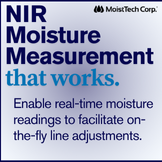Have you noticed how many "chiefs" there are now in large corporations? Historically, there was always the Chief Executive Officer. The head honcho. The person reporting to the Board of Directors of public companies or directly to owners in a privately held company. Even that role didn't come about until well into the 1920's. Henry Ford was only the President at Ford Motor Company.
Then, along came the Chief Operating Officer, leader of all operational assets and people, then the Chief Financial Officer, leader of the capital structure and investor base. In modern times, over the last couple decades, you can add in Chief Information Officer, Chief Marketing Officer, and even a Chief Diversity Officer. Lots of chiefs these days are needed to manage a vast and sprawling organization to meet the goals set forth by the Board of Directors.
As a person who continues to try to make a career in commercial sales to large organizations like paper or consumer products companies, I always liked to know who the Chief Purchasing Officer was in the companies I targeted. Not that I would ever try to sell them something. I learned very early in my career, selling high in a corporate hierarchy did not have my intended benefits. They have people for that. Decisions under 8 figures in value or capital commitment rarely reach their desk. You have to understand limits of authority to effectively navigate complex hierarchies to be the most successful.
Why I tried to understand the Chief Purchasing Officer was to help me figure out the business and the sourcing strategies. It is critical to understand the dynamics affecting consumer demand and how these translate into supply and innovation needs. Understanding "why" there is a specific customer need determines "what" and "how" a supply partner can best articulate its value proposal and orient its operations to provide superior performance. What was important to the organization when they had to seek resources outside their own footprint of control?
The CPO set many of the contractual terms all suppliers had to abide by. They set the tone for what kind of supplier they were interested in aligning with. Perhaps that entailed targets for MWBE spend (Minority and Woman-owned Business Entities.) The CPO had to adhere to the annual spending budgets set fourth by the executive team for what the company needed from outside specialists. They had to set cost reduction targets for ingredients, parts, capital equipment, real estate, advertising, research & development. Their responsibilities went way beyond the cost of goods sold that went into the product or service. The CPO had to minimize transaction costs, minimize supply risks, and drive innovation to differentiate brands in the marketplace. It's a big job these days.
So the opportunity to ask a former CPO who spent 35 years with a global, Fortune 50 company a few questions for our Nip Impressions readers was very exciting to me. The CPO I interviewed controlled tens of billions of annual dollar spend, before they retired. Over my 30 years of selling, I led efforts that resulted in roughly a half a billion dollars of commercial sales to this organization for automation, power, process chemicals, ingredients, supply chain services, and packaging services for the parent company and the divested companies over that time period. I heard from the whole line of succession of CPOs through their 'top supplier' summits they held every other year. Those summit banquets brought together 300+ of the top global suppliers to hear from all the chiefs on how their trading partners are integral to the success of the organization. Supplier representatives were briefed on the next 5 years of goals, encouraged to maintain operational excellence that brought them to the table, and challenged for new ideas to help them achieve greater targets over time.
Of all the categories of spend you managed, what was the most difficult? All categories are challenging and each brings its own level of risk. Advertising may be the most complex due to the often undefined nature of what you spend and how you measure return. The category is often difficult, if not impossible to create a "specification" for what is needed; hence, a lot of judgement. Results can be hard to measure, although digital advertising has brought new tools to determine effectiveness.
Speaking of risk, which category brought the most risk to your organization? The higher risk categories are most often driven by uncontrollable elements such as FX (foreign exchange rates), commodity feedstocks, supply/demand, long lead times. Chemicals are highly dependent on global effects, while packaging is more determined by local effects. Net, each is challenging for different reasons. This is why you need to understand the fundamentals of each market.
Was there a big difference in buying across the globe? There are tremendous cultural differences in buying across the globe. Learning how to connect with people from different backgrounds is the biggest challenge. The execution of global supply chains is also more complicated, considering currency, logistics, and the need for strong planning capabilities.
Did you prefer longer or shorter supply agreements? Depended on the market and the uniqueness of what was supplied. If you supplied a commodity, shorter may be better; if you have a proprietary or special attribute, longer may be better. This also depends on the level of capitalization for an innovation or asset base. It also depends on my internal customer's change cycle; if their product design changes frequently, shorter is often better.
I captured a few more answers to questions about the type of suppliers, size of spend, and what makes a successful supplier to their organization that I will have to share with you in Part II of this interview. I'm simply out of space this week. You'll have to watch out for the follow up on Nip Impressions.
Steve Sena (stevesena@me.com) is a Cincinnati native. He obtained degrees in Paper Science & Engineering from Miami University in Oxford, OH and an MBA concentrating in Economics from Xavier University. He's worked for a broad array of leading producers, suppliers, and converters of pulp and paper grades.






















